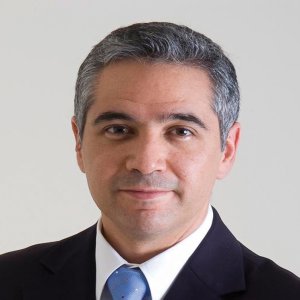Shaping Human Capital to Suit Automotive Needs

STORY INLINE POST
The automotive industry is going full speed ahead thanks not only to the machines running it but to the hands operating them as well. This industry has generated over 600,000 direct jobs, and employment is expected to grow by 4% in 2014. As the demand for a capable and skilled workforce rises, automotive companies are starting to recognize the importance of HR strategies to stay ahead of the competition. Patricia Helbig, Client Partner at Korn Ferry, the world’s largest executive firm and talent consultant, has identified the trends of the industry when sourcing its human capital. According to Helbig, companies recognize that candidates for top managerial positions must fulfill both the technical competencies of the job profile and various soft skills. These skills are evident in high performance employees, who Helbig describes as functional and technical managerial experts, good developers of subordinates, difficult to replace, and able to work independently with little to no supervision. “The biggest issue in the industry is the high turnover rate. Since there is so much demand, people are staying in one job for less than three years,” Helbig explains. The motive behind this changing of jobs is that people strain to achieve higher salaries and positions. For Helbig, this transition does not provide people with the opportunity to obtain the profound experience needed to climb the corporate ladder. Already established companies fear the entry of new players will lead to a wave of migrating talents. “To a certain extent, people are obtaining better positions that are not necessarily deserved due to a human capital shortage,” notes Helbig.
Korn Ferry strongly suggests that its clients should not take the approach of offering higher remuneration to competitors’ employees as this is not good for the job market or for the companies. “The automotive industry is normally a lower compensator at the general and lower management levels,” Helbig comments. Rather than focusing on offering higher salaries to competitors’ employees, the implementation of development programs can ensure retention. Employees are more likely to stay in a company if they feel they have a promising future. “In a satisfaction evaluation, over 54% of employees placed career development as a top priority in their professional lives,” she states. “Meanwhile, 48% of managers do not know how to create development plans or believe they have time for that. Even the most successful OEMs and top suppliers do not know how to carry out the development programs.” This is where Korn Ferry steps in by helping them develop programs based on the Princeton model of 70:20:10. In this model, the individual develops according to the following ratio: 70% work experience, 20% mentoring, and 10% workshops. The company’s Leadership and Talent consulting area has different offerings in line with this, ranging from succession plans, high performance potential identifiers, the implementation of effective teams, and strategic alignment. As more importance is placed on HR, the company has seen growth in this service as it represents 40% of its business with the automotive sector.
The implementation of development programs comes with challenges of its own, one of these being cultural alignment. Multinational companies have different values and work ethics than those of Mexican origin, which means that aligning the business vision with the right candidate can be difficult. “Another challenge lies in extremely experienced people that have been formed by their previous company. As they enter a new company, they have to transform their mindset and adopt new priorities and production systems,” Helbig observes. “We help companies identify who to keep and develop and to seek out high potential employees,” Helbig points out. For Helbig, a high potential person is restless, self-aware, a risk taker and innovative. “29% of high performance employees turn out to be high potentials too and high potentials make up 93% of high performers,” she adds.
As Mexico sets its sights on higher technology and complex manufacturing, the demand for specialized people will rise. Helbig predicts that as this transition occurs, transnational companies will have to fill technical expert positions with expatriates for the first couple of years, to be substituted by local people later on who will be developed into those positions. “However, this depends on the culture of the company. Japanese companies are going to be more cautious in these situations than European ones,” she adds. “Sourcing specialized workers will be hard at the beginning but it will be facilitated by the alignment of the industry with universities.” Helbig clarifies that while this transition will be slow, it will by no means lessen Mexico’s competitive edge, since companies are not looking to have expatriates in the long term but more skilled locals. “This is because when they source local managers, they normally pay lower wages than expatriated counterparts,” she explains. As Helbig expands, “All CEOs now recognize that human capital is the most important factor in reaching their goals, since talent strategy makes it possible to execute a business strategy.”



















